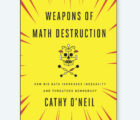Capital models can do so much more than fulfill regulatory requirements — they can improve decision-making. At many insurance and reinsurance companies they do, while at others it can seem like the models, having satisfied regulators and rating agencies, are underutilized.
How can companies make the most of their models?
Three actuaries considered the question in a panel session titled “Economic Capital Modeling — Is It Impacting Business Decisions?” at the Casualty Actuarial Society Spring Meeting in May in Toronto.
The actuaries, all veterans of capital modeling and enterprise risk management, included: Kendra Felisky, FCAS, member of the CAS Board and a past chief risk officer for a European insurance group; David Ingram, FSA, executive vice president at Willis Towers Watson and a well-known thought leader in ERM; and Kevin Madigan, ACAS, CERA, chair of the CAS Risk Management Committee and a director at Willis Towers Watson with years of capital modeling and ERM experience.
The panelists held a wide-ranging discussion, and two themes emerged: numbers and communication.
Numbers
The modeling process has quantification at its core. Even the risks that defy quantifying — reputation and operations, for example — are assigned a number.
But Madigan noted that most people don’t look at risk quantitatively; only actuaries do. “We’re the ones who think about it in terms of numbers and exact probabilities,” he said.
The numbers issue has several facets. Regulators and others are interested in the extremes of capital models — for example, how much capital is needed to survive a 1-in-100 year event? The mathematics, such as using copulas, is complex.
Said Felisky: “We’d like to get away from when the actuaries went into isolation and came back with an answer” and the board “has no understanding why the number changed.”
While companies need to understand the extremes, the managing of a business mostly involves means and averages — the everyday. Said Ingram: “People filter out rare events.” A 1-in-200 year event “is much too remote to think about.” In his experience, the only time that management worries about solvency is if they are solvency-challenged at that moment.
Unfortunately, non-quants tend to shy away from numbers. They rely on actuaries for number-crunching, but that can be a problem if boards and executives also cede the curiosity and skepticism critical to their job.
Said Felisky: “We’d like to get away from when the actuaries went into isolation and came back with an answer” and the board “has no understanding why the number changed.”
If the model seems confusing or irrelevant, it is more likely to be underutilized.
Actuaries should emphasize that models can help understand the everyday. They can estimate the probability that a company will hit or exceed a plan, Felisky said, or the probability of breaking even. They can also look at earnings volatility as well as facilitate important activities like reinsurance purchases or planning. Some companies have even used models to help set salaries, though Madigan argued against the practice, as it jeopardizes buy-in and could subject the model to attack.
Maximizing the use of the model has a regulatory benefit as well. In many jurisdictions, one of the most important risk management tests is the use test, in which a regulator assesses how well the risk management process is integrated into the operations of the company. That ensures the model is utilized, Felisky said. “The use test is paramount.”
Communication
If a lack of expertise — and a little innumeracy — holds back model understanding, it often falls on actuaries to communicate more clearly.
One way is to educate.
Felisky says that, primarily due to Solvency II, European boards have joint and several responsibilities for the model; this gives board members plenty of incentive to know the model well. “The best thing for communicating is training,” she said. She knows of boards going on “multiple away-days” to discuss relevant issues such as underwriting risk and how the model handles it. “Once you’ve got the board trained, they know what questions to ask,” she said. “They know what they are seeing.”
Madigan emphasized that management should be educated repeatedly on the model, though not necessarily on the details. The results that management sees should be succinct. “It should say, ‘This is what we did. This is why we did it. Here is the result.’”
Ingram suggested taking a cue from catastrophe modelers, with whose work management is more familiar. He has noticed that executives respond to simple reports — maps that are red, orange and yellow to indicate how much risk exists in different areas. Communicating concisely is important in the rest of the organization as well.
The model should be flexible, Felisky said, so that parts of it can be run quickly to respond to business needs. That means setting up the model so that it can be run piecemeal. That way it can be quickly updated to learn more about, say, alternative reinsurance programs.
In the end, Madigan said, it is important that the modelers “understand the psychology of the people using the model.”
Modelers need to give management “the information they need and want” so “they will actually use it in a way that is understandable.”
James P. Lynch, FCAS, is chief actuary and director of research for the Insurance Information Institute.













